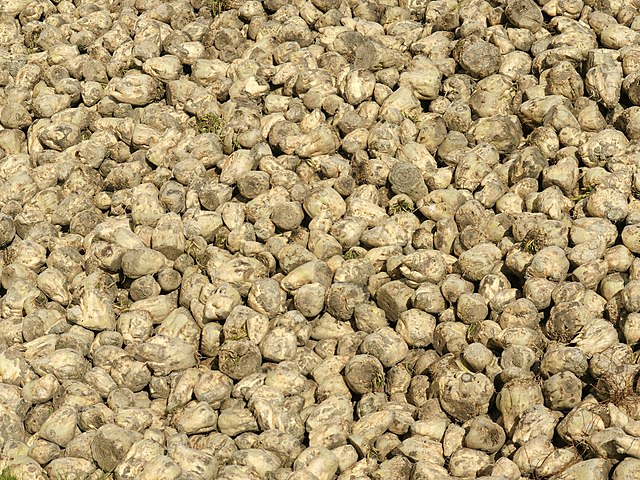The UK sugar beet sector which supplies the country’s entire sugar raw material projects a strong 2025, at least regionally.
According to a National Farming Union (NFU)’s industry outlook in December 2024, there are as many opportunities countering current challenges.
Both opportunities and challenges cut across UK’s sugar prices and global production trends.
Sugar Production Deficit Narrowing
One of the opportunities regards stocks, which are on an improving trajectory. The latest world sugar deficit review by the International Sugar Organization (ISO) stands at -2.5 million tonnes, down from from -3.5 million tonnes.
Furthermore, independent projections by Globaldata has brought the 2024-25 deficit to just -0.6 million tonnes.
Globaldata also reveals that the 2025-26 season could see global sugar reserves rebound to a 3 million-tonne surplus.
Price Promise for Sugar Beet in Europe
The one factor that is causing headache is a damp on prices, which could worsen if the 2025-26 surplus prediction materializes. But in Europe, where beets predominate, current low prices for beets could discourage production in 2025 and hence whet strong prices.
In the UK context, sugar beet prices could be in balanced territory since processing is a mandate of only the British Sugar company. The company partners with over 2,300 growers nationwide to provide one of the highest beet sugar capacities globally.
Demand for English beet sugar could also improve, given the sentiment for eco-friendliness that the processing giant advocates.
The Brazil Question
Although the above factors signal positive price and production trends in the UK and Europe, they are inconclusive without considering Brazil.
As the largest sugar-producing nation in the world, Brazil often impacts global production and pricing patterns for years to come. 2024 sugar prices are trending low primarily because forecasts put Brazil’s 2023-24 production at 661.4 milllion tonnes, 6.5% above the 2022-23 output.
This, among other factors, are what informs the future performance of the sugar beet sector in the UK and Europe. To learn more about the UK sweeteners industry and its place in the world, read on the statistics below.
UK Sugar Beet Statistics
Almost all sugar in the UK today comes from sugar beets. Sugarcane used to be a major raw material in the 19th century Britain before regional wars impacted its imports from Europe. Sugar beet is a plant that stores sucrose in its rhizomes, from which processors crush sugar. It thrives in temperate regions, especially in the Northern Hemisphere. In 2013, the UK was the 10th biggest producer of beets at 8 million tonnes. Excepting the United States, the top producers in 2013 were European nations, namely Russia (39.2 million tonnes) and France (33.6 million tonnes). By 2022, the UK’s production was still in the global top 10 but had depreciated to 6 million tonnes.
How high is sugar production in the UK?
The UK’s sugar production, almost exclusively from beets, reached 1,038,000 tonnes in 2021, according to FAOSTAT. In the same year, the beet output, which processed this sugar, hit 7,364,000 tonnes.
How has sugar beet yield fared in recent years?
The UK boasts a high yield rate of beets, at parity with that of neighboring France. In 2021, beet production from all 95,249 cultivated hectares reached 77,313 kg per hectare. A year later in 2022, the yield depreciated to 65,936 kg per hectare in tandem with falling hectarage at 91,225 hectares.
Where do beets grow in the UK?
According to British Sugar, there are 2,300 growers of the sucrose-rich crop in East Anglia and the East Midlands. They sow their crop in spring and harvest it in autumn.
